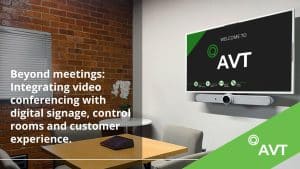Have you ever wondered what the classrooms of the future will look like? Imagine a learning environment where technology seamlessly integrates with traditional teaching methods. Students have access to education from anywhere, and artificial intelligence and augmented reality enhance the learning experience. In today’s era of rapid technological advancement, the landscape of education is undergoing a profound transformation. Traditional classroom settings are evolving into dynamic, hybrid learning environments, where the demand for accessible, flexible, and technologically-empowered education has never been greater.
Embracing Accessibility and Flexibility in Education
In the ever-evolving world of education, accessible and flexible learning environments are at the forefront. Students today expect to connect with their lessons not only within the physical classroom but also from the comfort of their own homes. This enables them to learn at their own pace and on their own terms. The need for accessibility and flexibility has never been more crucial, and AVT has emerged as a key player in meeting these demands.
AVT recognises the importance of providing students with the means to connect, learn, and collaborate seamlessly. Our audio-visual solutions bridge the gap between traditional in-person learning and remote education, ensuring that students can access lessons whether they are physically present in the classroom or participating from a distance(distance learning). This adaptability is particularly relevant in the context of today’s hybrid learning models.
AVT’s Facilitation of Remote and In-Person Education
AVT’s audio visual technology allows educators to stream, broadcast, and capture teaching sessions, making it possible for students to participate in real-time, even when they are not on campus. This capability ensures that education can continue without disruption, whether due to unforeseen circumstances or to accommodate students’ individual preferences. AVT enhances in-person education by providing tools and technologies that foster engagement and interaction within the classroom. Their solutions facilitate dynamic presentations, collaborative projects, and interactive discussions, enriching the traditional learning experience.
The Rise of AI and AR in Learning Spaces
The convergence of Artificial Intelligence (AI) and Augmented Reality (AR) is reshaping the landscape of modern education. These technological powerhouses have the potential to revolutionise the way students learn and educators teach. Their impact is multifaceted:
- Personalized Learning: AI algorithms analyse student performance data and adapt educational content to individual learning styles and abilities. AR enhances engagement by overlaying digital information on the physical world, creating immersive learning experiences.
- Interactive Learning: AR applications enable students to interact with educational materials in ways previously unimaginable. For example, biology lessons can come to life as students explore 3D models of cells through AR.
- Accessibility: AI-powered tools offer accessibility features, such as speech-to-text and text-to-speech capabilities, making education more inclusive for students with diverse needs.
- Data-Driven Insights: AI helps educators gather insights from large datasets, allowing them to make data-driven decisions to improve teaching methods and student outcomes.
The integration of AI and AR into learning spaces through AVT’s solutions offers a multitude of benefits. Students become more engaged as learning becomes interactive and immersive, with AI tailoring content to individual interests and abilities. Educators benefit from AI-driven insights that enable the refinement of teaching methods, leading to improved student performance and comprehension. Additionally, AI-powered accessibility features ensure inclusivity, accommodating diverse learning needs and preparing students for the tech-driven job market.
Balancing Technological Advancements with Fundamental Learning
In the midst of rapid technological advancement, it is crucial to uphold the core values and principles of education. While technology can enrich and enhance the learning experience, it must complement, rather than overshadow, fundamental learning concepts.
As technology continues to evolve, it is imperative to recognize that certain educational values remain timeless. Concepts such as critical thinking, problem-solving, and effective communication are the cornerstones of learning. AVT’s solutions support and augment these foundational principles, ensuring that technology serves as a tool for advancing these skills rather than supplanting them.
AVT’s commitment to educational excellence is exemplified by its approach to technology integration. Rather than overwhelming educators with complex systems, AVT’s solutions are intuitive and user-friendly, allowing educators to focus on teaching rather than managing technology. By seamlessly incorporating modern tech into the learning environment, AVT empowers educators to create dynamic and engaging lessons that reinforce fundamental learning concepts.
Designing the Classroom of Tomorrow with AVT
The future of education is characterized by versatile, technology-enhanced learning spaces that adapt to the diverse needs of students. The classrooms of tomorrow should be designed with versatility in mind, seamlessly transitioning between traditional lecture-style settings and interactive, immersive spaces. AVT’s solutions offer the flexibility to create adaptable learning environments, ensuring that education can evolve to meet the changing needs of students and educators. Audio visual technology plays a pivotal role in shaping the classrooms of the future. For example, interactive displays foster student engagement, while state-of-the-art audio systems ensure that every student can hear and participate.
Simplifying Technology for Effective Teaching
Simplicity is the key to unlocking effective teaching experiences. Educators should be able to seamlessly integrate technology into their lessons without the burden of complex systems. Technology should enhance, not hinder, the teaching process. It should be intuitive, allowing educators to effortlessly incorporate it into their lessons. User-friendly interfaces and straightforward controls are essential to ensure that educators can focus on delivering engaging and impactful content.
Effective educational technology is designed with educators’ needs at its core. It should complement their teaching style and enhance the learning experience. Solutions that understand the unique challenges and requirements of educators foster a harmonious relationship between teaching and technology. Adapting to new technology can be a journey, and educators need guidance along the way. From optimising interactive displays to maximizing the benefits of audio enhancements, educators will find practical advice to elevate their teaching with technology.
Conclusion
Technology is a powerful ally in education, but it’s true potential is unlocked when it simplifies rather than complicates the teaching process. Empowering educators with user-friendly solutions, comprehensive training, and dependable support ensures that they can focus on what they do best: inspiring and educating the next generation. The commitment to reliability and continuous innovation in educational technology propels the field forward, aligning it with the evolving needs of students and educators alike.
If you’re ready to simplify technology in your educational environment and experience the benefits of user-friendly solutions, comprehensive training, and ongoing support, we invite you to explore these possibilities further. Contact AVT today to join the movement towards a more innovative and effective educational landscape.





